How Do Alternators Work?
Following on from our previous technical articles about brakes, crankshafts, camshafts, and engine oil, we're going to have a closer look at the vehicle charging system, and in particular how alternators work.
What does an alternator do?
An alternator converts mechanical energy into electrical energy to run the various electrical systems within your vehicle, and ensure your battery remains fully charged. You will find the alternator located in the engine bay of your vehicle, and you can generally identify it from the ventilation slots in its body, the toothed belt, and the pulley attached. It is worth noting that alternator belts have their sizes (length and width) written upon them, should you need to double-check the size when shopping.
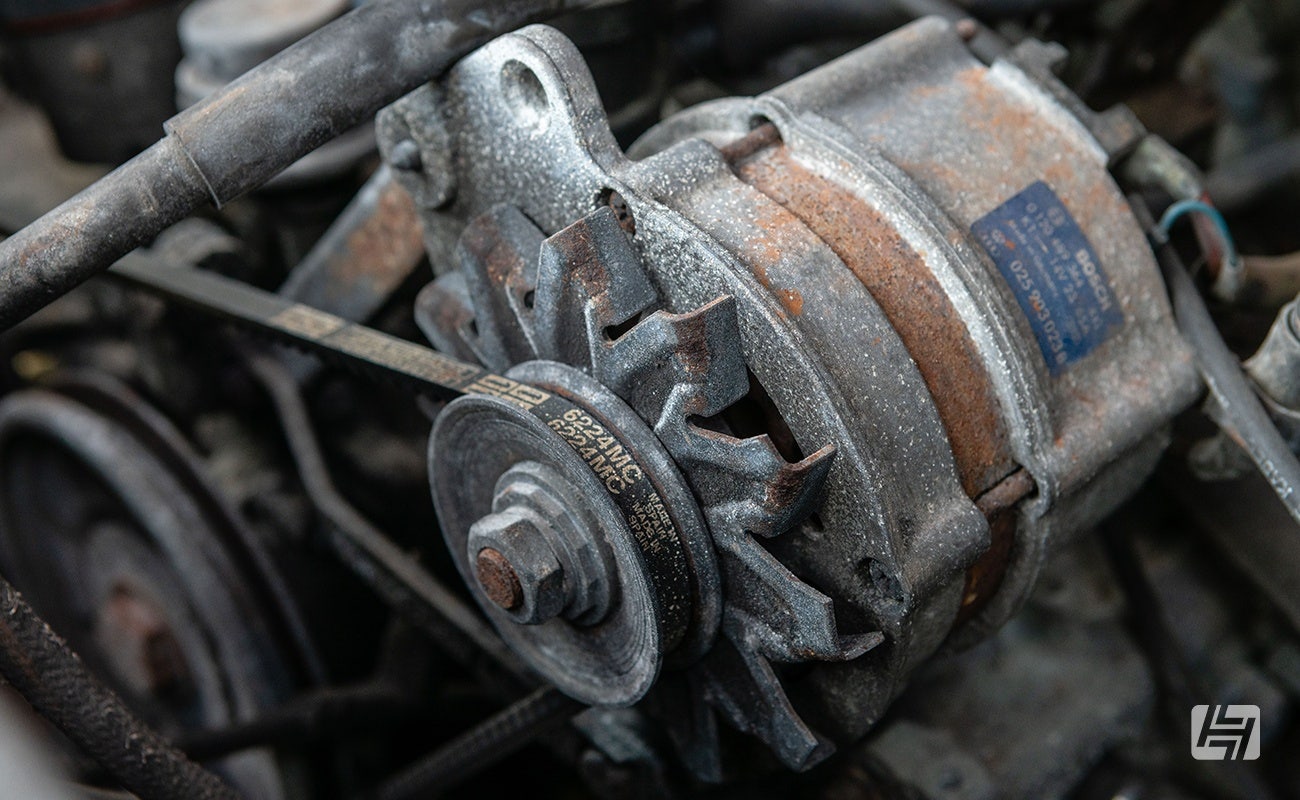

What is the difference between an alternator and a dynamo?
If you own a classic car you may find your engine is fitted with either a 6v or 12v dynamo rather than an alternator. Whilst they serve the same purpose, they do the job in slightly different ways. A dynamo works with a stationary magnetic field and a spinning coil which rotates within it to generate a DC current. An alternator does the opposite and has the magnets rotating inside a perimeter of tightly coiled wire, called a stator. The output from an alternator is an 'alternating current' which is then converted by a series of diodes into the DC current that your vehicle requires.
Why fit an alternator over a dynamo?
Good question and it comes down to efficiency really; the alternator produces more power for the same amount of effort. Couple this with a cheaper manufacturing cost (subsequently a lower retail price) less weight and their ability to generate charge at low RPM and it's hard to argue the case for a dynamo, outside of keeping things original.
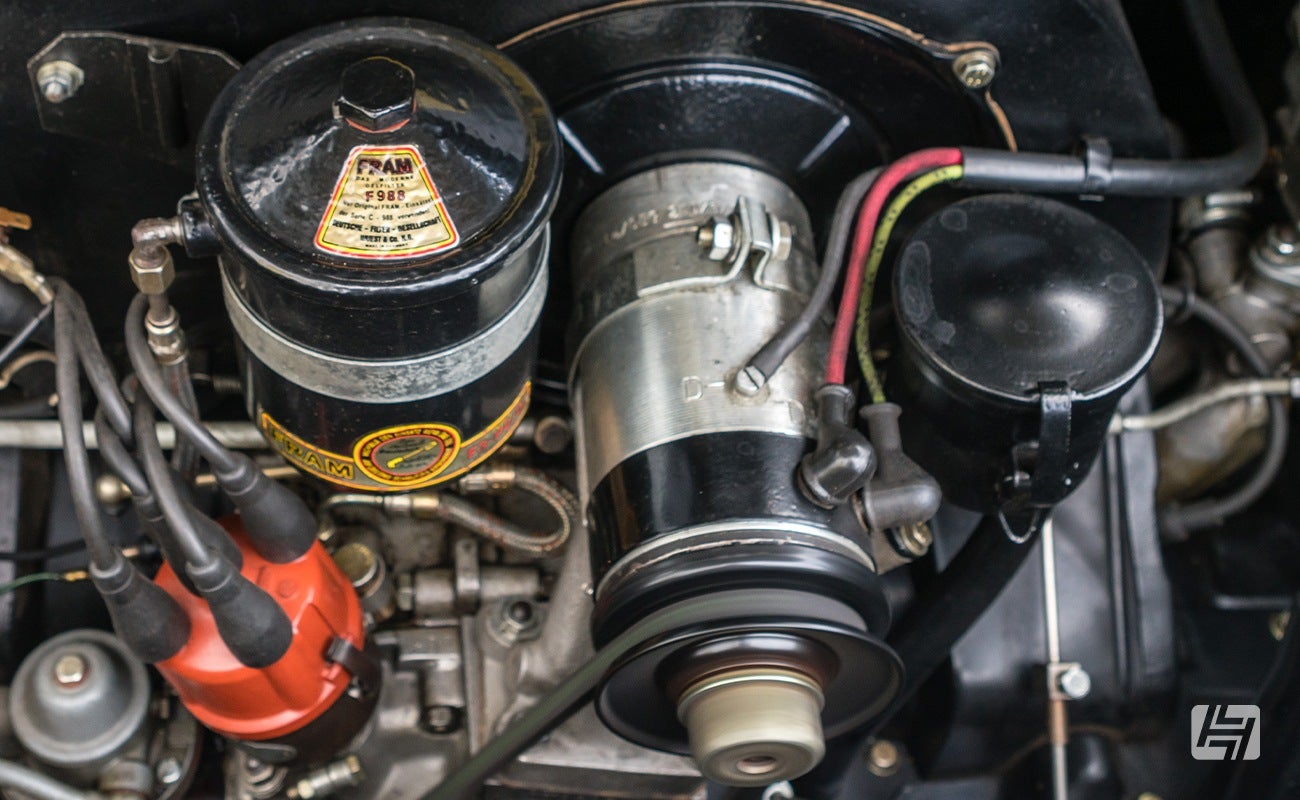

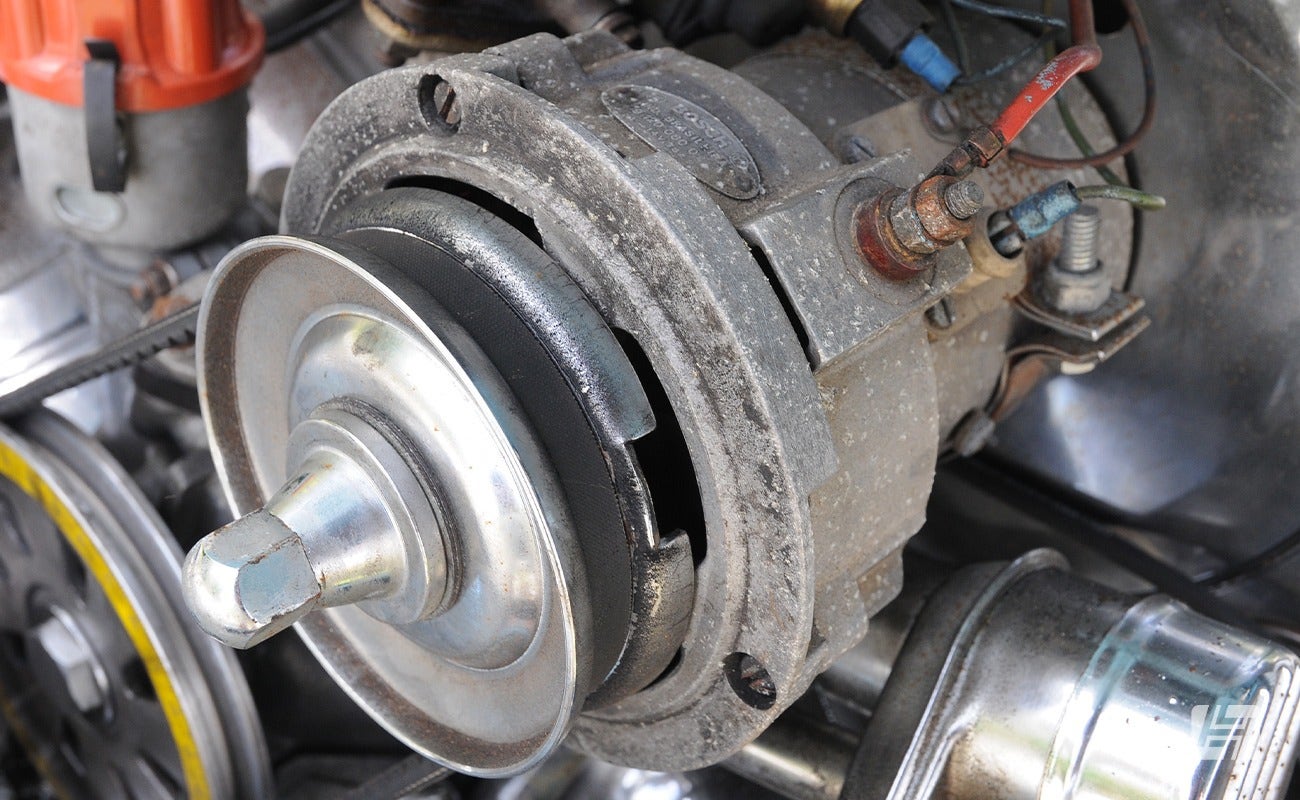

How do alternators work?
Allow me to elaborate on my brief description above with the aid of a diagram. Ironically for a component that generates power, the alternator first needs the power to work, and the reason for this is to energize the electromagnets of the rotor.
The electromagnetic field is created at the point you switch your ignition switch on, and when the engine fires into life the pulley (on the left of the diagram) starts to rotate via the alternator belt. The belt is driven by another pulley spinning at engine speed, typically connected to the end of the crankshaft. The alternator pulley connects to a shaft inside the body of the alternator, and it is upon this shaft that the electromagnets rotate within the fixed armature assembly. The faster these magnets rotate, the more voltage is induced.
However, unlike when a dynamo generates power, this system produces an alternating current, hence the requirement for a rectifier and the diodes which are inside it, to convert it back to useable DC. Once this is done the voltage flows through to the regulator to ensure a constant output. Too little, and it is topped up, too much and it is held back to protect the circuits within the vehicle.
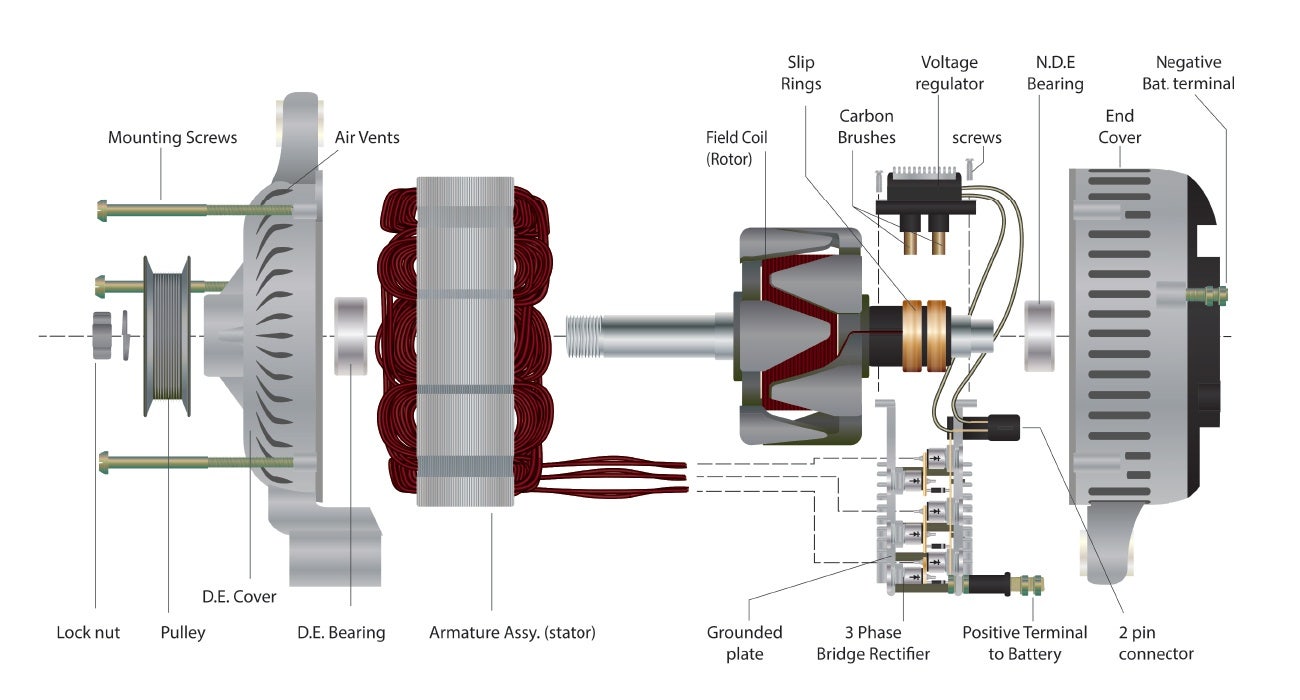

Converting to an alternator
An alternator conversion kit is a common upgrade for aircooled owners. Our kits are based on an SSP alternator and also include a new pulley, pulley nut, and washer, backing plate tinware, a new alternator stand, securing strap, belt, and a wiring kit. These are available as 55 amp kits and 70 amp conversion kits. It is worth noting SSP also produces a Type 1 90 amp alternator, and Type 4 70 amp alternator but at the time of writing they are sold separately.
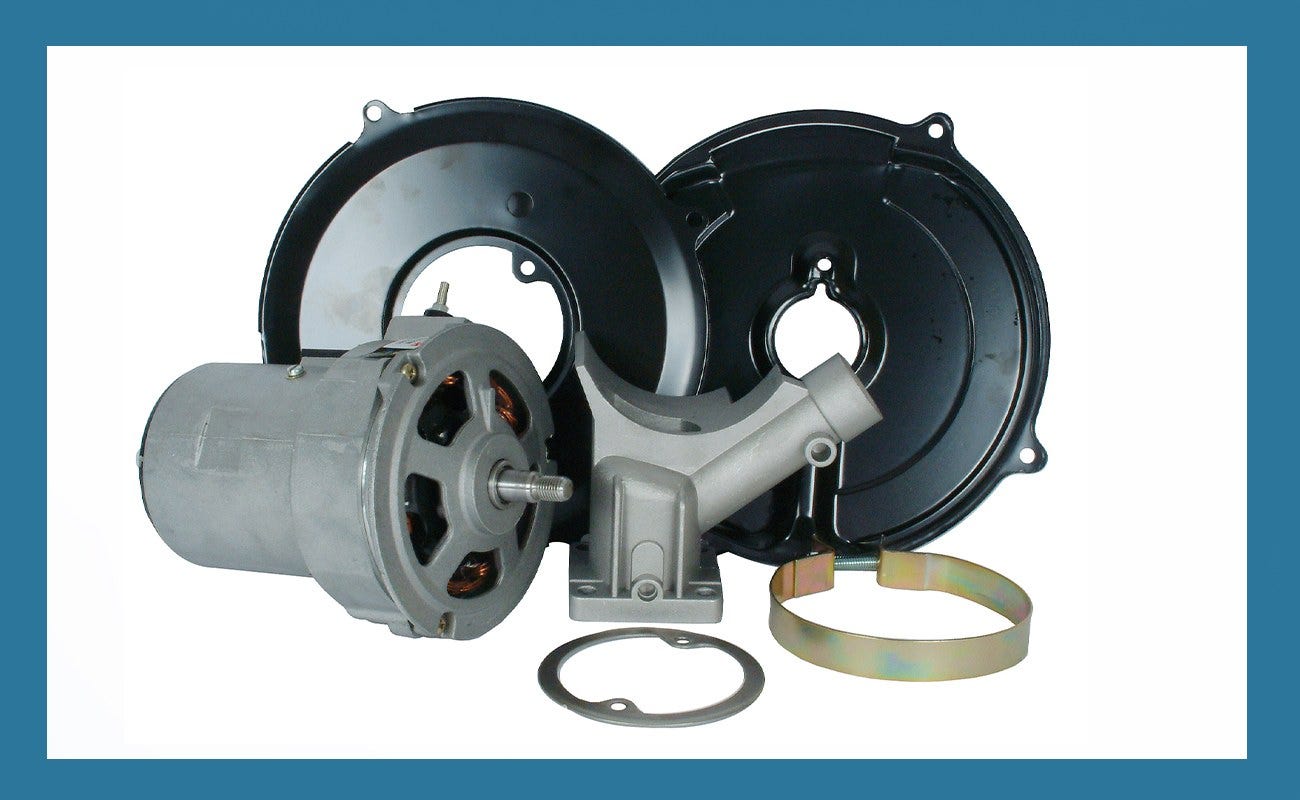

Is it easy to fit a new alternator?
We looked at how to test an alternator in a previous blog entitled Why does my car battery go flat? So should you discover your alternator is faulty, you will be wanting to fit a replacement. The good news is we stock plenty of Porsche and VW alternators and with the alternator located on the outside of the engine (and generally within arm reach) so it should be simple enough for a DIY mechanic to change it themselves. Alternatively, your local specialist will happily take care of it for you.
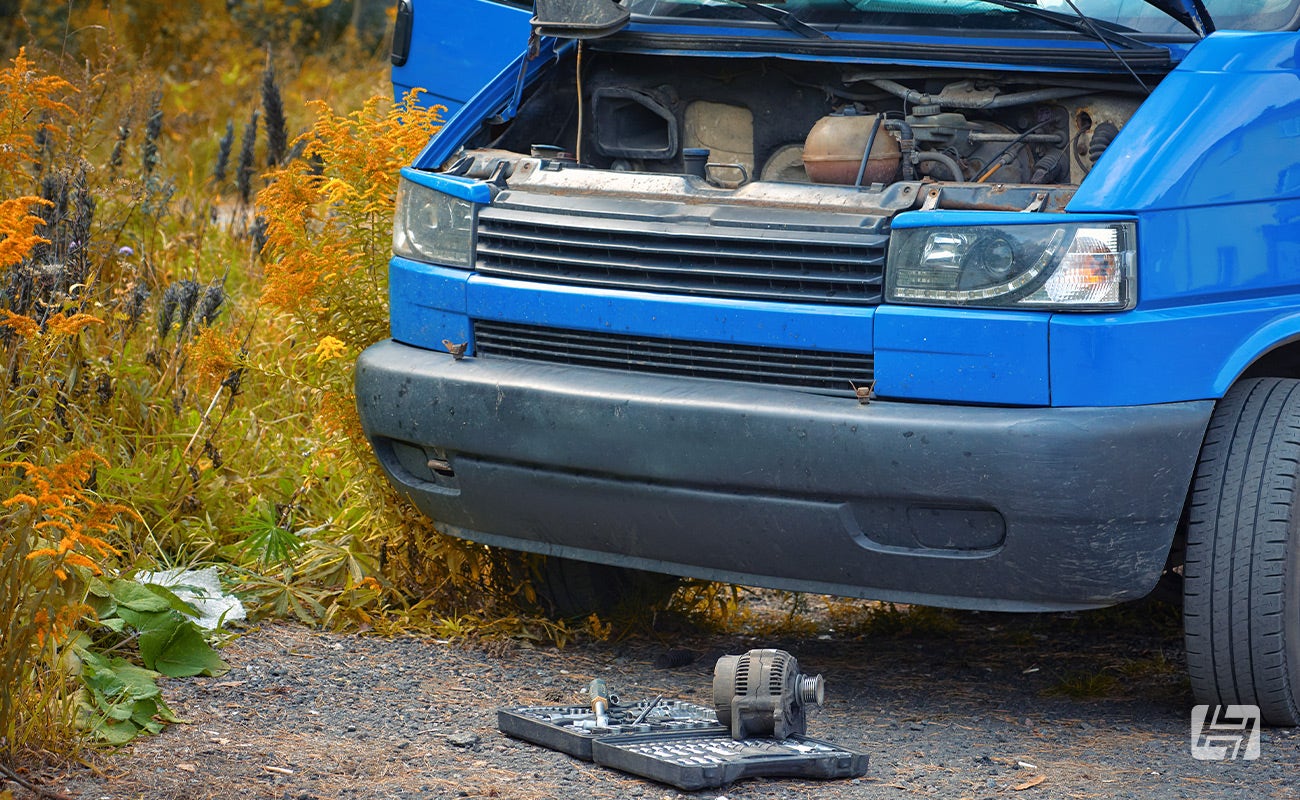

We hope this has answered a few questions regarding alternators for you. Got more questions about this or another technical topic? Leave us a comment below.
Andy




 Beetle
Beetle
 T2 Bay
T2 Bay
 T2 Split
T2 Split
 T25
T25
 Transporter T4
Transporter T4
 Transporter T5
Transporter T5
 Golf Mk1
Golf Mk1
 Golf Mk2
Golf Mk2


 911
911
 996
996
 997
997
 986 Boxster
986 Boxster
 987 Boxster
987 Boxster
 912
912
 944
944
 924
924


 Defender
Defender
 Discovery Series 1
Discovery Series 1
 Discovery 2
Discovery 2
 Series 1, 2 & 3
Series 1, 2 & 3
 Freelander
Freelander
 Freelander 2
Freelander 2
